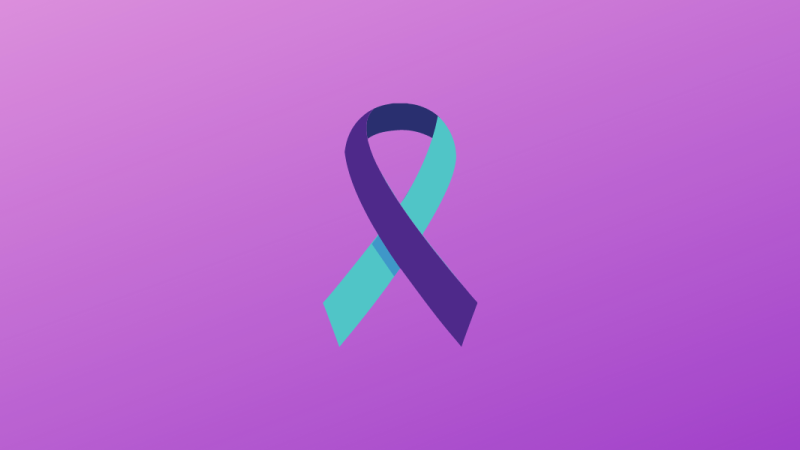Positive Psychology, Resilience, and Flourishing: Moving beyond the absence of illness and into wellness.
Educational workshop by Stacy Simera, MSSA, LISW-S
Summary
Positive psychology refers to the study and promotion of wellness rather than a focus on illness, and recent research shows that positive psychology as a modality can be as effective as CBT in the treatment of anxiety and depression. In this workshop, attendees will be introduced to the concepts of positive psychology and ways to apply interventions in a variety of settings.
About the Presenter
Stacy Simera is an independently licensed social worker with supervision designation in Ohio. She provides psychotherapy at Kent Psychological Associates, facilitates psycho-educational programming at the Oak Clinic for Multiple Sclerosis, conducts workshops across the state for the Ohio Child Welfare Training Program, and writes continuing education materials for Heisel and Associates. Stacy also volunteers for the Ohio Adolescent Health Partnership and serves as Ohio Health Policy Director for the national non-profit Start School Later. As part of a pilot program for the National Multiple Sclerosis Society, Stacy taught curriculum developed by the MS Society and Dr. Shawn Achor on using positive psychology to cope with chronic disease. The pilot program was deemed successful and the curriculum was launched nationwide. Stacy frequently speaks on the topic of positive psychology as part of professional continuing education as well as corporate wellness programs and community education.
Suggested Books for Further Learning
- Flourish by Martin Seligman (2012)
- Positive Psychology for Overcoming Depression by Miriam Akhtar (2012)
- The Happiness Advantage by Shawn Achor (2010)
- Flow by Mihaly Csikszentmihalyi (2008)
- Authentic Happiness by Martin Seligman (2003)
Online Resources
VIA Institute on Character website: www.viacharacter.org
- Original site for the “Values in Action” 24 signature strengths test
Positive Emotion and Psychophysiology website: www.peplab.web.unc.edu
- Overview of Dr. Barbara Fredrickson’s research is available via the Research tab
Authentic Happiness website: www.authentichappiness.sas.upenn.edu
- Primary site for Dr. Seligman. Multiple tests available, including the PERMA assessment
Selected Applications of Positive Psychology
EverydayMatters Program – Using positive psychology to help cope with multiple sclerosis: https://www.nationalmssociety.org/Resources-Support/Library-Education-Programs/Everyday-Matters
Master Resilience Training (MRT) for the U.S. Army – Part of the Comprehensive Soldier Fitness (CSF) Program: https://www.usar.army.mil/CSF/
“Father of Positive Psychology” – Dr. Martin Seligman
- President of APA in 1998 and developed “Positive Psychology” concepts that year with Mihaly
Csikszentmihalyi and Ray Fowler
- Published “Authentic Happiness” in 2002 and “Flourish” in 2012
- Director of the University of Pennsylvania Positive Psychology Center
“Mother of Positive Psychology” – Dr. Barbara Frederickson
- Conducted research on the benefits of positive emotions in the 90s
- Introduced the “Broaden and Build” Theory of Positive Emotions in 2001
- Introduced the “Positivity Ratio” in 2005
- Director of PEP Lab (Positive Emotions & Psychophysiology) at UNC-Chapel Hill
Broaden and Build Theory
- Positive emotions had previously been thought to hold no value beyond temporary pleasure.
- Broaden: Dr. Frederickson’s research noted that positive emotions “expand” cognition and behavior, resulting in expanded visual field, increased creativity, and wider consideration of options. In other words, better able to “see the big picture.”
- Build: Dr. Frederickson’s research also suggests that positive emotions, over time, increase resilience and can positively impact biological growth.
Positivity Ratio
- Research by Barbara Fredrickson and Marcial Losada, published in 2005
- Examined individuals, couples, and business teams. Assessed ratio of positive vs. negative emotions experienced and the impact on functioning and mental health.
- Ratio of 3:1 or higher is associated with flourishing (actual number is 2.9)
- Ratio of 2:1 is associated with languishing
- Ratio of 1:1 is associated with poor mental health
- Self-testing is available at www.positivityratio.org
Current Positive Psychology Framework – “PERMA”
- Positive Emotions (Formerly “The Pleasant Life”) – Hedonia
- Experiencing positive emotions about past, present, and future.
- Engagement (Formerly “The Good Life”) – Eudaimonia
- Experiencing engagement and “flow” as described by Mihaly Csikzentmihalyi in 1990
- Study of 500 youth by Csikzentmihalyi: those who experience “flow” had higher levels of happiness, deeper social ties, and were more likely to attend college.
- Positive Relationships
- Research has consistently shown that happier and healthier people have, and effectively use, a supportive social network.
- Meaning (Formerly “The Meaningful Life”)
- Using signature strengths and virtues in service of something larger than ourselves.
- Accomplishment (Sometimes referred to as “Achievement”)
- Having goals in life, big or small
- Achieving competence in an area of interest
- Building self-discipline and perseverance (which are often more impactful than IQ)
Applications of Positive Psychology
Positive Emotion: Past/Present/Future
- Assign gratitude writing.
- Explore forgiveness techniques.
- Assign “three good things” journal.
- Teach mindfulness and relaxation.
- Reinforce physical exercise, healthy nutrition, and adequate sleep.
- Reinforce “infusing positivity” into one’s surroundings.
- Encourage spending money on experiences more than “stuff.”
- Challenge the “Three Ps of Pessimism” (M. Seligman): Personal, Permanent, Pervasive.
- Reinforce finding or scheduling things to look forward to.
Engagement
- Help someone identify and utilize their signature strengths.
- Help someone identify (and find time to participate in) tasks or interests that fully engage their concentration (“flow). If someone is unsure, ask the following questions:
- What activities do you lose yourself in?
- What activities give you a sense of authenticity – “This is “me”?
- What activities give you a feeling of excitement?
- What activities invigorate you rather than exhaust you?
- What activities were you able to pick up very quickly?
- What activities don’t bore you – in fact, you find new ways to do?
Relationships
- Help someone recognize that sometimes our instinct is to isolate when we are ill and encourage fighting that instinct. Help people build and use a healthy social support system.
- Mental Health America (www.mentalhealthamerica.net) gives the following suggestions:
- Make a list of the people you want to contact regularly. If necessary, add a reminder to your calendar.
- Commit to a certain amount of time together each day or week—without distractions.
- Listen really well.
- Ask for specific kinds of help. Even the best of friends can't read your mind.
- Show how much you respect, support and appreciate your friends and family.
- Move out of relationships that make you feel unsafe, lower your self-esteem, or draw you into unhealthy habits like abusing drugs.
Meaning
- Encourage people to use their strengths to help others.
Accomplishment
- Help people with SMART goal-setting: Specific, Measurable, Achievable, Realistic, Timely.
- Reinforce perseverance. Research on children shows that they will work harder when they are praised for the effort, not their outcome.
- Help people recognize achievements they have already obtained in order to help counter-act negative thinking.
Signature Strengths
24 strengths (or “Values in Action”) that are cross-culturally accepted. Organized by 8 categories:
- Wisdom: Creativity, Curiosity, Judgment, Love of Learning, Perspective
- Courage: Bravery, Perseverance, Honesty, Zest
- Humanity: Love, Kindness, Social Intelligence
- Justice: Teamwork, Fairness, Leadership
- Temperance: Forgiveness, Humility, Prudence, Self-Regulation
- Transcendence: Gratitude, Hope, Humor, Spirituality, Appreciation of Beauty & Excellence
Social Relationships and Mortality Risk
- Meta-analysis by Holt-Lunstad, Smith, and Layton
- 148 studies on mortality and social connectedness
- Mortality by disease only was measured (ie - excluded studies on suicide, homicide, or injury)
- 308,849 participants overall
- 50% increased likelihood of survival for participants with stronger social relationships.
- Consistent across age, sex, initial health status, cause of death, and follow-up period.
- Association was strongest for complex measures of social integration, lowest for binary indicators (lives alone vs. lives with others)
- Multidimensional assessments of social integration yielded the highest association: 91% increase in odds of survival.
References:
Achor, S (2010) The Happiness Advantage: The Seven Principles of Positive Psychology that Fuel Success and Performance at Work. Crown Publishing Group. New York
Boehm JK, Kubzansky LD. The heart’s content: the association between positive psychological well- being and cardiovascular health. Psychol Bulletin 2012;138:655–91.
Csikszentmihalyi, Mihaly. (1990) Flow: The Psychology of Optimal Experience. Harper Row, New York.
Diener, E., Seligman, M. E. P., Choi, H., & Oishi, S. (2018). Happiest People Revisited. Perspectives on Psychological Science, 13 (2), 176-184. doi:10.1177/1745691617697077
Fredrickson, B. L. (1998). What Good Are Positive Emotions? Review of General Psychology, 2(3), 300- 319. doi:10.1037/1089-2680.2.3.300
Fredrickson, B. L. (2001). The Role of Positive Emotions in Positive Psychology. American Psychologist, 56(3), 218-226. doi:10.1037/0003-066X.56.3.218
Frederickson, BlL and Losada, M.F. (2005) Positive affect and the complex dynamics of human flourishing. American Psychologist. 60, 678 - 86
Hanson, K. (2019). Positive Psychology for Overcoming Symptoms of Depression: A Pilot Study Exploring the Efficacy of a Positive Psychology Self-Help Book versus a CBT Self-Help Book.
Behavioural and Cognitive Psychotherapy, 47(1), 95-113. doi:10.1017/S1352465818000218
Holt-Lunstad J, Smith TB, Layton JB (2010) Social Relationships and Mortality Risk: A Meta-analytic Review. PLoS Med 7(7): e1000316. https://doi.org/10.1371/journal.pmed.1000316
Johnson, K. J. & Fredrickson, B. L. (2005). “We all look the same to me”: Positive emotions eliminate the own-race bias in face recognition. Psychological Science, 16, 875-881.
Kubzansky, L. D., Huffman, J. C., Boehm, J. K., Hernandez, R., Kim, E. S., Koga, H. K., . . . Labarthe, D. R. (2018). Positive Psychological Well-Being and Cardiovascular Disease. Journal of the American College of Cardiology, 72(12), 1382-1396. doi:10.1016/J.JACC.2018.07.042
Lomas, T., & Ivtzan, I. (2016). Second Wave Positive Psychology: Exploring the Positive–Negative Dialectics of Wellbeing. Journal of Happiness Studies, 17(4), 1753-1768. doi:10.1007/S10902-015- 9668-Y
Loryana L. Vie, Lawrence M. Scheier, Paul B. Lester & Martin E. P. Seligman (2016) Initial Validation of the U.S. Army Global Assessment Tool, Military Psychology, 28:6, 468-487, DOI: 10.1037/mil0000141
Reivich, K. J., Seligman, M. E. P., & McBride, S. (2011). Master Resilience Training in the U.S. Army.
American Psychologist, 66 (1), 25-34. doi:10.1037/A0021897
Schiffrin, H. H. (2014). Positive Psychology and Attachment: Positive Affect as a Mediator of Developmental Outcomes. Journal of Child and Family Studies, 23(6), 1062-1072. doi:10.1007/S10826-013-9763-9
Seligman, M. E. P., & Csikszentmihalyi, M. (2000). Positive Psychology. American Psychologist, 55(1), 5-14. Retrieved from http://rave.ohiolink.edu/ejournals/article/316751571
Seligman, M. (2002) “Authentic Happiness: Using the New Positive Psychology to Realize Your Potential for Lasting Fulfillment” Simon and Schuster. New York.
Seligman, M. E. P. (2007). Coaching and Positive Psychology. Australian Psychologist, 42(4), 266-267. doi:10.1080/00050060701648233




